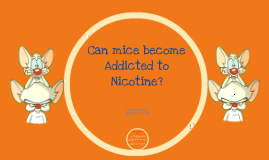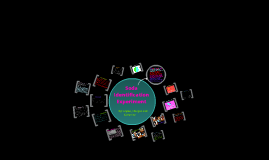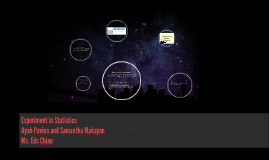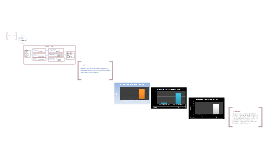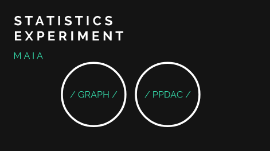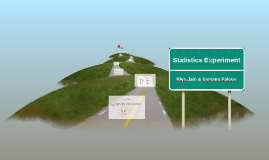Statistics Experiment
Transcript: Experimental Design Matched pair experimental design better compare results of a junior taking a SAT reading section with and that without a highlighter. controls: two passages equal in difficulty; subjects in the same grade Controlling lurking variables: same room, same time, and allowing the same amount of time. randomization: assigning the subjects numbers and randomly assigning one of each pair to the experimental group allowed proper replication because subjects were pretested then paired. These pairs were then compared statistically through the analysis of the scores of their second passages. This makes the experimental procedure more specific and consistent as it can be repeated in an identical and replicate manner without variation which contributes to the accuracy of the data and results Convenient sample, so: possible bias because the students are in the same class, so their scores may be more similar to each other than if the population was random, underestimating the difference using a highlighter makes for a typical junior. because they are taking a SAT prep class, they may perform better in general, therefore underestimating the effects of using a highlighter. Elements to to minimize error: We used scores from the pre-test to pair individuals of similar skill sets together for comparison We gave all students the same exam to avoid inconsistencies due to different difficulty levels We also tested pairs at the same time to avoid inconsistencies in performance due to variations in time of day. We controlled time allowed for testing to avoid better scores due to more time. To further minimize error in our results, we could have controlled environment and highlighter color. Population: Northview juniors Sampling: convenient sample of 20 juniors in a zero period SAT class. Pretested without a highlighter, scored, and matched randomly assigned one person in each matched pair to use a highlighter on a second, different reading section and the other to do the second section without the highlighter. Ideally, we would assign all 400 Northview juniors a number, select 20 unique juniors, pretest and match, and retest matched pairs with pretest scores collected scores from juniors from post-test (with and without highlighter) The participants did not know if they were using highlighter or not before hand. In the 10 pairs that were tested, most did better when they used the highlighter with an exception of few. For trials 1,2,3,8,9 and 10, the results were better with the highlighter and for trials 4, 5, 6 and 7, the ones that did not use a highlighter did better on the test. Out of 10 trials, 6 did better with the highlighter. RESULTS Calculations Conclusion cont... Generally, the use of a highlighter resulted in a higher score We expected this result, since highlighters emphasize key facts and ideas In 6/10 of the pairs, the individual with the highlighter got a higher score In only 3/10 of the pairs, the individual without the highlighter score higher 1/10 of the pairs scored the same. Possible sources of error include: bias (convenience sampling and the preconcieved notions of subjects) lurking variables (time taken, testing environment, motivation, etc.) placebo effect, since the subject knew whether he or she was receiving the treatment (highlighter) or not, skews performance. Purpose Conclusion and Summary The Graph of the scores of subjects who used highlighters is skewed left, so mostly high scores, whereas the graph of the scores of subject who did not use highlighters is skewed right, with mostly low scores. The mean (90%) and median (91.66%) of those who used a highlighter were higher than the mean (81.67%) and median (83.33%) of those who did not use highlighters. There were two outliers in the highlighter graph, 58.33% and 75%, pulling the average down, and there were no outliers in the non-highlighter graph. The standard deviation (0.135) and IQR(0.3333) for the highlighter graph are greater than the standard deviation (0.117) and IQR (0.2499) of the non-highlighter graph, so the spread for the non-highlighter scores was smaller. Sources of Bias The Highlight Graphs Subjects Comparison RESULTS To determine if being allowed to use a highlighter would enable Northview juniors to perform better on the SAT multiple choice reading passage section, as opposed to not having a highlighter.






